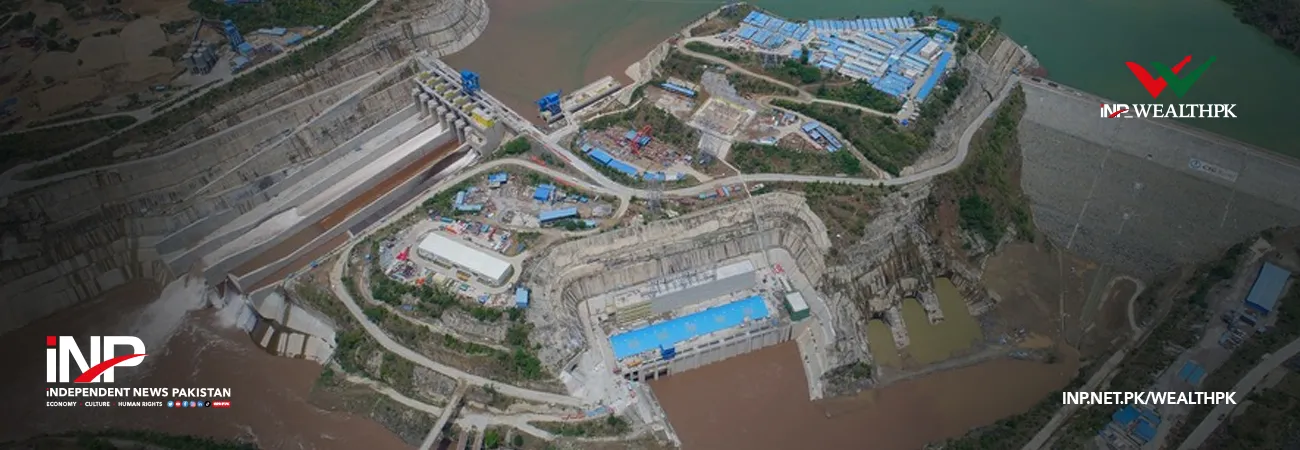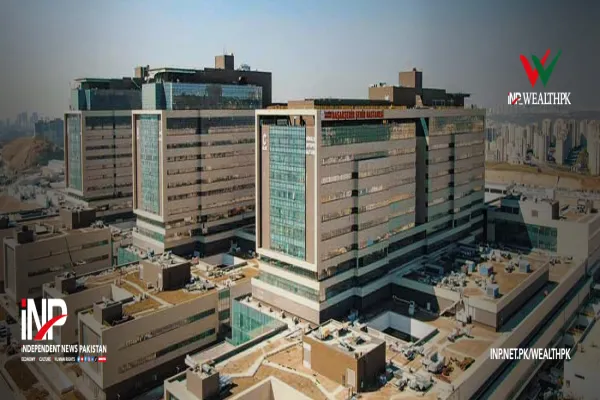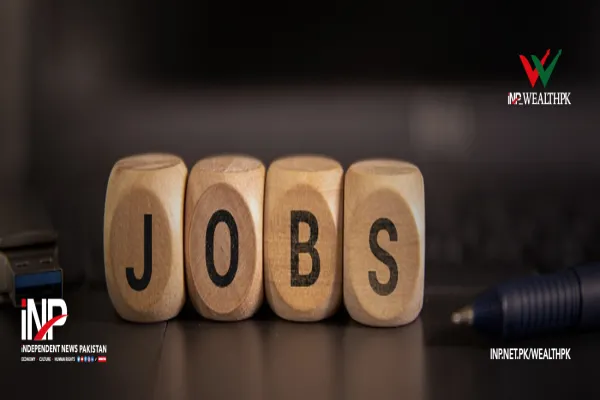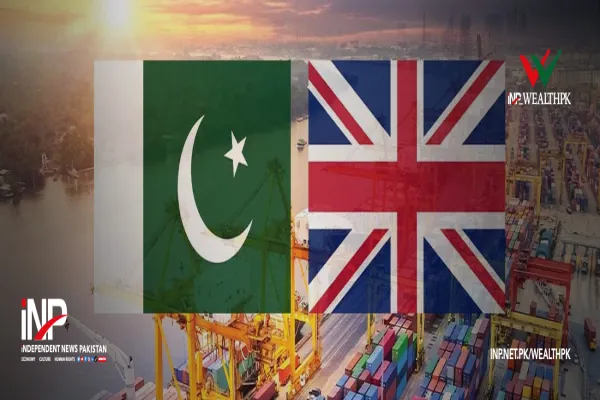i INP-WEALTHPK
The launch of the multibillion-dollar CPEC in Pakistan – a worldwide infrastructure development project – set the alarm bells ringing in the world capitals. Billions of dollars were pumped into the international media outlets and the so-called think-tanks which began orchestrating an unrelenting baseless propaganda against this ambitious project. The bottom line of the propaganda was that the project was an attempt to trap Pakistan into debt. However, the ground realities indicate that this ambitious project is helping Pakistan in different vital sectors to break free from debt and move towards economic stability. According to Pakistani experts and officials, the debt trap rhetoric is highly miscalculated and a futile attempt to deny Pakistan the CPEC benefits. To defend against the misleading propaganda of the West, one must understand the type of investment and loans under the project.
There are four types of financing instruments. The first is “investment,” where the Chinese firms that carry out the infrastructure projects borrow commercial loans with an interest rate of 4-5%. The second is the “concessional loan,” which is awarded to the Government of Pakistan at a 2-2.5% interest rate with a maturity period of 25-30 years. The third is the interest-free loans, which comprise a small percentage of overall financing and carry no interest charges. Lastly, some “grants” are designed to help improve a state’s capacity. Despite numerous clarifications and the fact that the Pakistani government departments have provided facts and figures about the CPEC, the propagandists and cynics continue to call it a “debt trap.”
A solution to this puzzle can be found by analyzing the financial data provided by the Chinese Embassy in Islamabad. As per the data, only $5.9 billion of $18.9 billion funding provided by the Chinese companies so far for infrastructure projects constitutes loans with 2% interest payable from 2021. The rest of the sum is meant for energy projects funded by the Chinese companies and other partners. In addition, as part of the agreement, $143 million was granted as an interest-free loan for the Gwadar East Bay Expressway in Balochistan, and another $29 million to finance welfare projects. The result is that less than 20% of all CPEC projects are financed with loans, while the rest of over 80% are financed by using various financial mechanisms. With only $5.9 billion in CPEC loans, Pakistan’s total external debt and liabilities are $99.1 billion, so how can the CPEC loans be called a “debt trap”? Undoubtedly, some global observers are calling CPEC a “debt trap” to further their own agendas.
An essential part of Pakistan’s total external debt and liabilities comes from loans extended by the International Monetary Fund, the World Bank, and the Asian Development Bank. Yet no one calls them a debt trap. A significant difference between the CPEC loans and Western loans is that the CPEC and its projects focus on the socio-economic development of underprivileged populations. For example, the CPEC’s western route will not only create jobs for the underdeveloped areas but also provide them with access to big markets, which will help them improve their economic conditions. Over the past 10 years, the CPEC has helped Pakistan tackle its energy crisis, besides building roads and other infrastructure across its length and breadth. In addition to the changing lifestyles due to increased energy and diminished distances, the economic activity has also increased dramatically.
In response to the project critics, the Ministry of Planning and Development says China offered support for Pakistan’s development when foreign investment had dwindled, and energy shortages and infrastructure gaps hampered economic activities. In 2021, repayment of government loans began at the rate of 2% with a repayment period of 20-25 years. Hence, the CPEC will not significantly impact loan repayments or energy sector outflows shortly. There will be far more significant economic benefits to Pakistan as a result of investments than any debt-related outflows. Defending against the misleading remarks, Noor Ahmed, Secretary Economic Affairs, said that Pakistan’s total foreign debt is approximately $106 billion, out of which only 10 to 11% comes from the Chinese loans, while the rest of 89-90% comes from other sources such as the International Monetary Fund, Paris Club, and other Western organizations.
“The Chinese government has always been a staunch supporter of Pakistan and has always intervened in times of economic crisis. Through the CPEC, China has invested in boosting Pakistan’s economy and building its infrastructure. One type of investment is pure capital gain, the other is interest-free loan, and the third is on straightforward terms. So, how China traps us in debt when it lends us money at one of the lowest interest rates in the world?” He further said, “China has actively provided loans while simultaneously investing in Pakistan, and it plans to invest more in the next phase of the CPEC. In other words, with peace and economic stability in Pakistan, China will also benefit.” Khalid Mansoor, former special assistant to the prime minister on CPEC affairs, emphasized that CPEC is setting the foundation of industrialization in Pakistan and creating jobs, as infrastructure and energy projects are being launched and operated.
In addition, Mansoor said, automation and agricultural phases will not only greatly enhance exports but also create an abundance of employment opportunities for Pakistanis. According to Syed Hasan Javed, Director School of Social Sciences and Humanities at the National University of Sciences and Technology (NUST), Pakistan suffered an average of 18 hours of power outages before China helped resolve its energy problem. As a result, there was an open opportunity for investment in Pakistan’s energy sector. “It was only China that dared to support Pakistan, which was plagued by terrorism, had lost foreign investment, and had energy shortages and infrastructure gaps that crippled its economic activities. When Chinese power plants successfully addressed Pakistan’s electricity shortage within a few years, the West started a negative propaganda after missing the boat,” Hasan said.
He further said that the Chinese loans are relatively concessionary and without the element of arm-twisting, unlike the Western loans with very high-interest rates and many strings attached. Asad Umar, former federal minister for planning, development, reforms, and special initiatives, said both the Pakistani government and the private sector borrowed for the CPEC power projects despite a report by a US research lab suggesting that the CPEC loans had high-interest rates. In addition, the average interest rate for the state-owned projects loans was 2.4%, but the private sector’s interest rate could have been higher. “Furthermore, China provided Pakistan with grants, including funding for the vocational training institute in Gwadar, Gwadar airport, Gwadar hospital, and interest-free loans for infrastructure projects in the area. As a result, the net effective interest rate on the CPEC infrastructure projects is approximately 1.98% if both grants and loans are considered,” he said.
“Even the Chinese loans to Pakistani companies are cheaper than those from other international lenders, including the Asian Development Bank. Pakistan faces a big challenge of debt sustainability, and the government is working on it, but it has nothing to do with the Chinese loans,” Asad added. “The Chinese loans account for about 10 percent of Pakistan’s total loans and 26 percent of its external debts. How can the West call this 26 percent debt a threat to Pakistan’s debt sustainability while owing 74 percent to the Western lenders?” Senator Mushahid Hussain Syed said, “I feel that the assertions made by the Western world are not based on facts. They are factually inaccurate. We do not have a debt problem with China because most of our debt is multilateral and owed to the international lending institutions, not to China.” As part of the Belt and Road Initiative, the CPEC has made considerable progress.
Yet, some countries and observers are trying to denigrate its enormous potential benefits by terming it a “debt trap.” With the CPEC entering its next phase, those opposed to it are using a two-pronged strategy to stall its progress. First, they misquote the CPEC’s financial figures and accomplishments in the media. Secondly, they raise the spectre of past militancy to mislead investors into believing that Pakistan is still a volatile investment destination. Over the last 10 years, China has been the largest investor in Pakistan, thanks to the CPEC that has not only attracted more Chinese investment to Pakistan but also transformed it from being investment-dry to investment-friendly. For instance, Saudi Arabia signed a $10 billion MoU to invest in the Gwadar oil refinery, along with another $10 billion in other deals.
The other countries too are looking forward to investing in Pakistan, especially in the CPEC projects, to reap its rich benefits. The energy projects under the CPEC have already helped Pakistan overcome its energy crisis, and since 2021, it has no longer been an energy-deficient country. Further, the CPEC has created around 70,000 direct jobs since 2015, and approximately 60,000 of the total jobs have gone to the local people. By 2030, around 800,000 people will likely be employed in different projects CPEC. Hence, the propaganda that CPEC is a debt trap for Pakistan is totally unfounded and baseless.
Credit: INP-WealthPk









